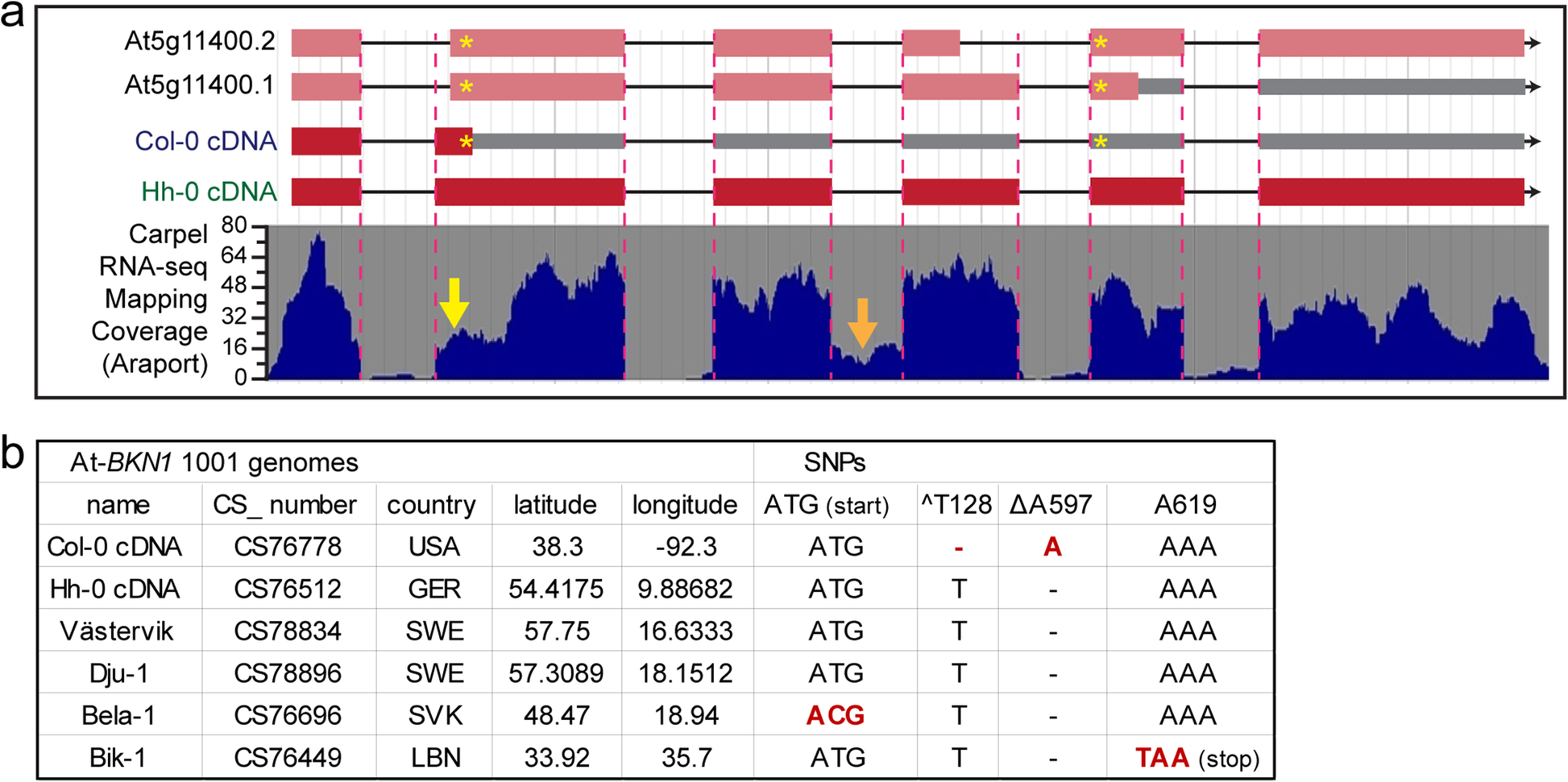Fig. 5

A. thaliana BKN1 gene models and ecotype polymorphisms. a. A. thaliana BKN1 gene models are shown with carpel RNA-Seq mapping coverage from Araport [45]. Yellow astericks (*) mark two in/del SNPs in Col-0 BKN1 when compared to Hh-0 BKN1 and A. lyrata BKN1. For the BNK1 Col-0 gene annotations and cDNA, the first asterisk marks a 1 bp deletion (T) resulting in an adjacent premature stop codon and the second asterisk marks a 1 bp insertion (A) that would result in a downstream premature stop codon for the At5g11400.1 annotation. Based on the reduced carpel RNA-Seq coverage at the 5′ end of the BKN1 exon 2, there may be alternate splice sites in use (yellow arrow) and some of these potential alternate splice junctions would restore the BKN1 Col-0 reading frame to produce a longer protein as predicted for the At5g11400.1 and At5g11400.2 annotations. See also Additional file 1: Figure S3 and S4. The orange arrow delineates the third intron that is not properly spliced in the top RT-PCR band in Fig. 1b. b. A. thaliana BKN1 polymorphisms in different ecotypes. In addition to Hh-0, Västervik and Dju-1 are predicted to encode a full length BKN1 protein (based on genomic sequencing). Bela-1 and Bik-1 displayed other SNPs that disrupt the BKN1 open reading frame (see also Additional file 1: Figure S6)